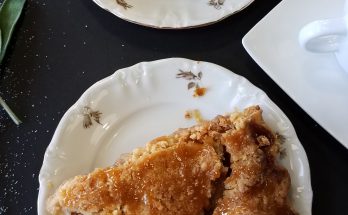Selecting an engagement ring is a nerve-racking experience. Purchasing diamonds at any time requires a major financial investment. But when it’s a gift for someone you want to spend the rest of your life with, making the “right” choice can be incredibly stressful. Bob Knox, designer and goldsmith at Knox Jewelers for the past 50 years, has a few words of advice on how to find the perfect ring.
The 4Cs: Color, cut, clarity and carat
The diamond itself will account for 85 percent to 90 percent of your expense, Knox says. Understanding the 4Cs of diamond quality will help you decide which elements you’re willing to compromise on in order to get the highest-quality stone you can afford. Share that information and your budget with your salesperson, and they’ll help you find the right diamond.
“First pick the color,” Knox advises. “That’s where you’ll see a big difference in the pricing.” Diamond color ratings actually denote the absence of color. Grades D, E, F, G, H, I and L are colorless. Beyond L, the stones start to look yellow.
“We sell a lot of G and H, that’s near the top end of the near-colorless,” Knox says. To the untrained eye, it’s difficult to tell the difference between a G and an H or I diamond, unless they’re set right next to each other or surrounded by clearer stones.
After choosing the color, look for a well-cut stone that’s symmetrical and not too bottom-heavy or shallowly cut. “If it’s not well cut, it won’t sparkle,” Knox says. A well-cut stone has several facets that meet evenly, with all the points lining up. If the diamond is bottom-heavy, it will be hard to set in jewelry, and the color may be concentrated near the point or edges. If the stone has a shallow cut, you can see what’s underneath the stone and you don’t want that. You shouldn’t see any scratch marks or any facets that look off-center under magnification.
The best way to ensure you are getting what you pay for is to only buy stones that are GIA-certified, Knox says.
“Next, you go to what’s internal — that’s clarity,” he says. Clarity gradings run from F-IF (flawless or internally flawless) to I1-I3 (inclusions). In the middle, going from high quality to low are the ratings of VVS1-VVS2 (very very slight inclusions), VS1-VS2 (very slight inclusions) and SI1-SI2 (slight inclusions).
“Men like to be flawless; women like a bigger stone,” Knox says, laughing. “There’s nothing wrong with a VS1-VS2 or a good SI. It’s like if you put two Porsches together: They’re both perfect, except one has a slight tear underneath the driver’s seat.”
The last of the 4Cs is carat — the size of the diamond. The largest diamonds you’ll find in the consumer market are 2-carat stones, but 1.5 carats can look just as impressive. The price per carat is lower for smaller stones because raw diamonds that are large enough to cut into 1 carat or larger shapes are hard to find.
The most dramatic jumps in price and appearance come in .5 carat intervals. There’s not much difference between a 1 and 1.23-carat diamond, but there’s a very large difference when you compare them against a .75 or a 1.5-carat stone. And diamond prices are volatile, so be aware that the cost might fluctuate if you’re not looking and buying on the same day.
Setting the stone
Once you’ve selected the diamond, you must still determine how to set it. Engagement rings range from simple gold bands with four to six prongs holding a solitary diamond to gem-encrusted bands and intricate pavé settings.
Knowing a bit about your sweetheart’s lifestyle can help you determine the best metal to use. Typical choices are white gold, yellow gold and platinum. But if your intended lifts weights, rock-climbs or wears rings on her right hand, avoid pavé or platinum ring bands.
“Platinum is resistant to wear, but you’ll get dings and bends,” Knox says. Those scratches can be buffed out, but if she’s going to obsess about the wear and tear platinum shows, it’s best go with 18-karat white or plain gold setting instead.
Titanium is another metal that’s offered by some jewelers. It’s not a precious metal, so it’s affordable, and it’s very durable. Like platinum, however, it will show scratches, so it’s not the best choice for an active woman. And unlike other metals, it is almost impossible to resize if you get a band that’s ill-fitting.
Something else to consider is how the engagement ring will be worn with the future wedding ring. The prongs that surround the stone are called the head; where it sits is the shank. If the head sits low on the shank, close to the finger, she will have to purchase a wedding band that curves around the stone. If the head and shank are elevated, it will fit tightly against any kind of wedding ring she chooses.
“Get her something plain and basic,” Knox recommends, “Then add to it.”
Nontraditional alternatives
The most popular diamond shape is round, but that’s also the most expensive cut because it’s the most in-demand, says David Richardson, a Knox Jewelers designer, goldsmith and appraiser.
“Certain diamond cuts are less durable,” he explains. “A princess cut — a square or rectangle — has four points that could chip. A marquis cut has two points, and a pear shape has one. … Rounds and ovals are the most durable. … [They] have to have a direct hit to chip.”
If you’re tempted to substitute a more affordable gem for a diamond, take into account how hard the stone is. “Emeralds aren’t good for everyday wear,” Richardson says. Emeralds may be resistant to scratching, but they will chip and break.
That’s because an emerald ranks at 7 on the Mohs scale of hardness — the same as a quartz rock. “Diamond is the hardest stone — it’s a 10,” Richardson says. “Ruby and sapphire are a 9, but there’s a big difference between a 9 and a 10.”
Another option is to look for vintage or estate rings that can be resized. Because many old stones aren’t GIA-certified, they’re not pegged to diamond market rates the way new stones are. And if the ring is being sold by a jeweler for someone who’s trying to get rid of it on consignment, the price can be well below true market value.
Family heirlooms also can be repurposed. Jewelers like Knox, which offers custom-design services, can extract the stones, melt down metals and create made-to-order rings.
Getting the size right
Fortunately, it’s easy to do all of the above in total secrecy. But you have to be ultra-sneaky to get the ring size right without setting off alarm bells.
“Most people don’t buy the right size ring,” Richardson says with a laugh. “That’s why you resize.”
The only way to determine finger size without asking, he says, is to pocket a couple of her rings to take to the jeweler. “Otherwise, you just need to go window-shopping with her and get the fit.”



